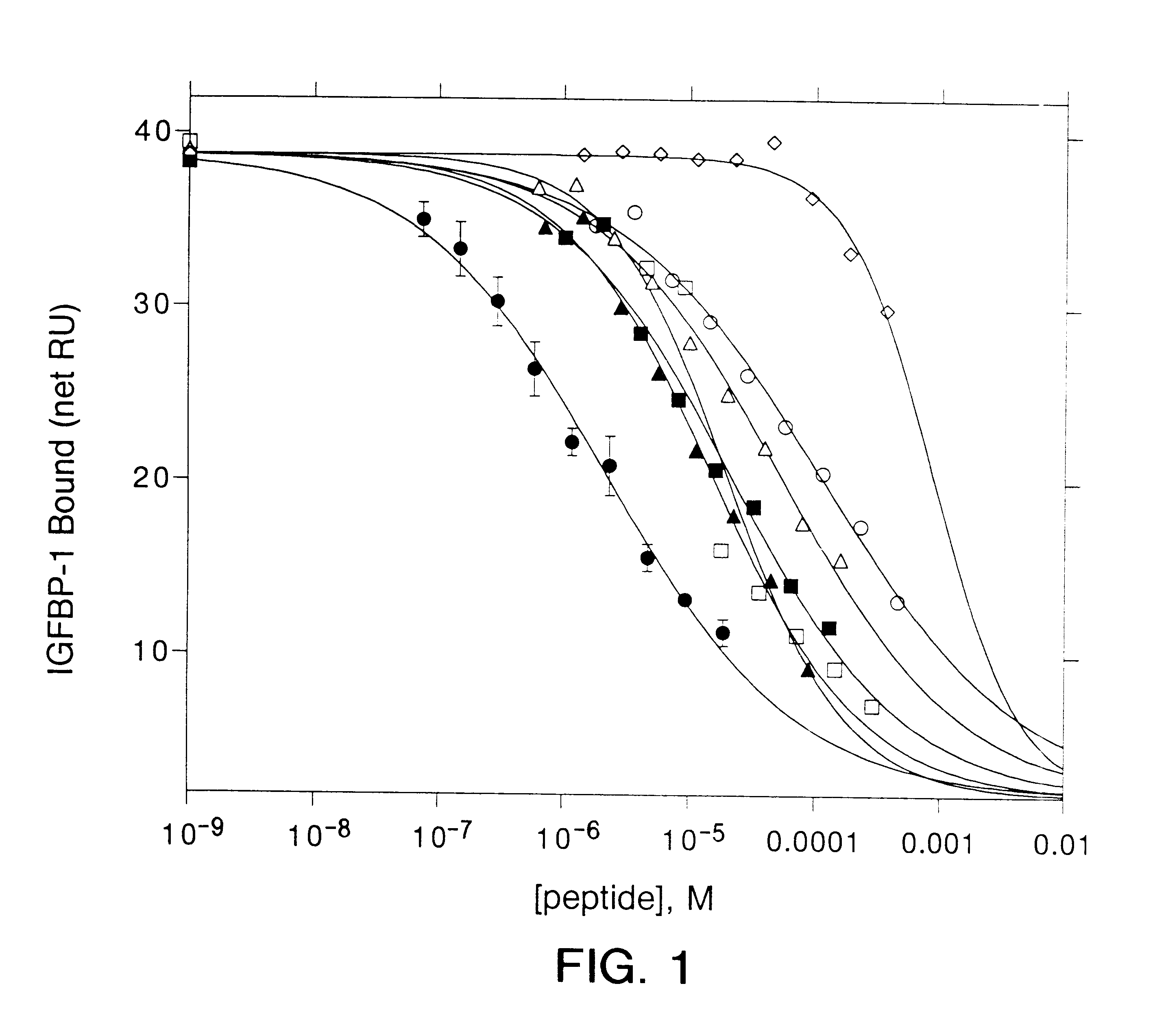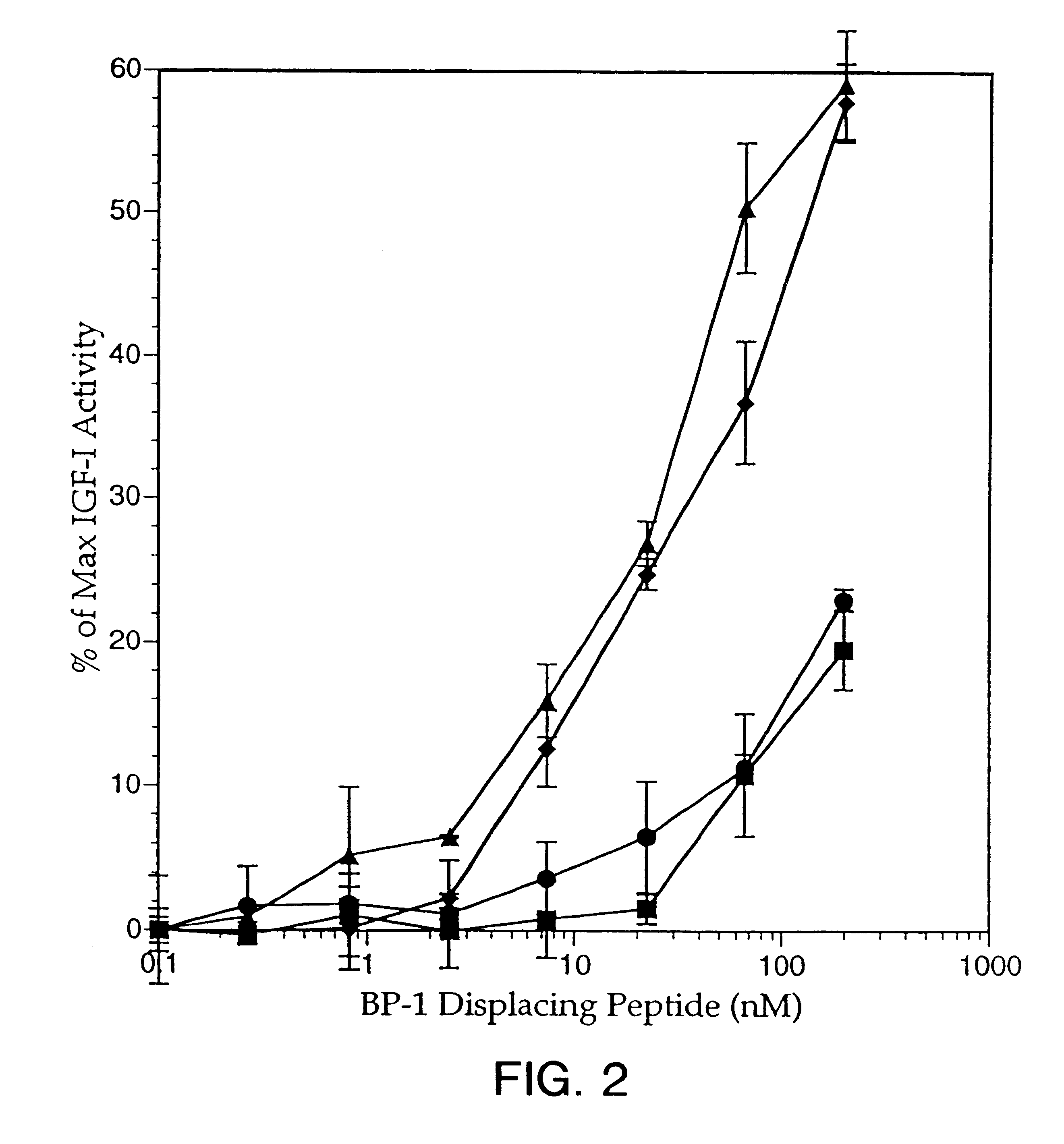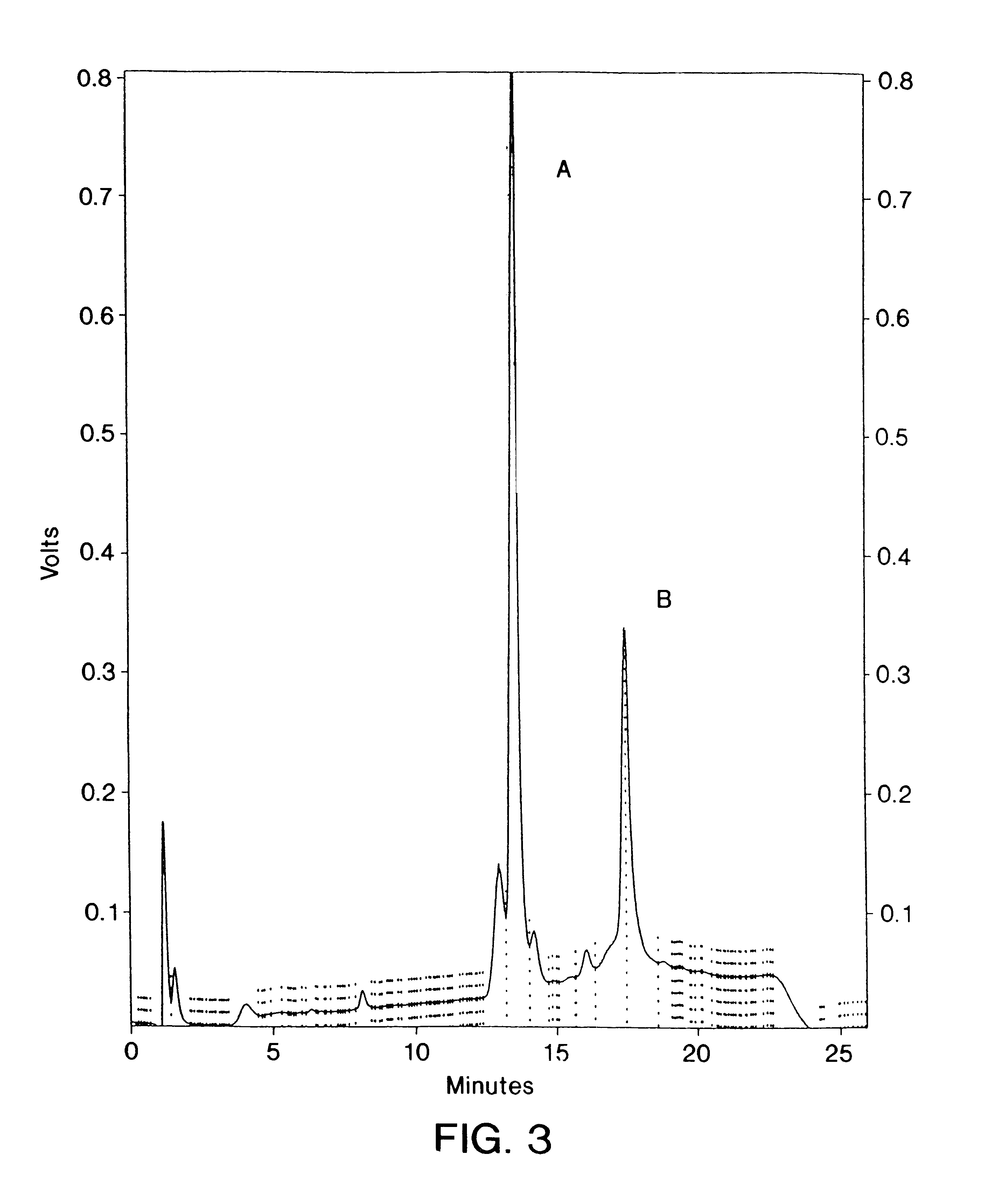Insulin-like growth factor agonist molecules
- Summary
- Abstract
- Description
- Claims
- Application Information
AI Technical Summary
Problems solved by technology
Method used
Image
Examples
example 1
Substitutions in bp1-16
Several single-residue substitutions in bp1-16 were tested for their effect on IGFBP-1 binding affinity by synthesizing peptides and measuring inhibition of IGFBP-1 binding to IGF-I. Sites for substitution were chosen based upon the known effect of an alanine or other substituted residue at the site.
G4 was previously found to be substitutable by D-alanine. Because the conformational effects of D-alanine are different from those of L-alanine, L-alanine was substituted for G4 in peptide bp1-29. Inhibition assays showed a 50-fold loss in binding affinity with this substitution (Table I).
P5 was previously found to be highly conserved in phage-displayed peptide libraries; however, some substitutions were observed. For example, three different peptide-phage clones were found with arginine at this position. Therefore, the L-alanine substitution for proline was tested, as well as several alternative substitutions (bp1-30, bp1-31, bp1-34). The results (Table I) show th...
example 2
Minimization of the bp1-01 Peptide via "Locked Helix"
It was previously shown that removal of the disulf ide bond in bp1-01 is destabilizing to both structure and function of the peptide. The possibility has been investigated of replacing the disulfide bond of bp1-01 with a chemically distinct structural constraint, while maintaining moderate binding affinity to IGFBP-1. These constraints were designed to link side-chain positions separated by 7 (from position i to position i+7) or 8 (from i to i+8) residues in the bp1-01 peptide.
The i+7 locked helix strategy, one of. the approaches used herein, has been described by Phelan et al., J. Am. Chem. Soc., 119: 455-460 (1997); WO 98 / 20036 published May 14, 1998, as have other i+7, i+3, and i+4 linkages (reviewed in Phelan et al., supra). In addition, other side-chain substitutions, allowing for ionic or hydrophobic interactions or metal chelation, have been used for the purpose of stabilizing a helical structure (reviewed by Phelan et al.,...
example 3
N-terminal Variants of bp1-16
Previous affinity-maturation experiments led to a peptide addition to the C-terminus of bp1-02, including a number of peptide-phage clones (Table III), and the synthetic peptide bp1-21A, the sequence of which is shown in Table III. Table III illustrates the C-terminal substitutions in the background of bp1-02.
It is sought herein to improve affinity further by two methods: substitution of the first four N-terminal amino acid residues from bp1-20 into bp1-21A, and re-randomization of the N-terminal amino acid residues of bp1-21A (in the context of the previously improved C-terminus).
Peptide bp1-25 (Table V) was synthesized to test the additivity (Wells, Biochemistry, 29: 8509-8517 (1990)) for the N-terminal and C-terminal maximally-preferred substitutions. Compared with bp1-16 in inhibition assays, bp1-25 showed about a 20-fold affinity improvement. However, the affinity of bp1-25 was not significantly improved over bp1-21A. This affinity improvement was c...
PUM
 Login to View More
Login to View More Abstract
Description
Claims
Application Information
 Login to View More
Login to View More - R&D
- Intellectual Property
- Life Sciences
- Materials
- Tech Scout
- Unparalleled Data Quality
- Higher Quality Content
- 60% Fewer Hallucinations
Browse by: Latest US Patents, China's latest patents, Technical Efficacy Thesaurus, Application Domain, Technology Topic, Popular Technical Reports.
© 2025 PatSnap. All rights reserved.Legal|Privacy policy|Modern Slavery Act Transparency Statement|Sitemap|About US| Contact US: help@patsnap.com



